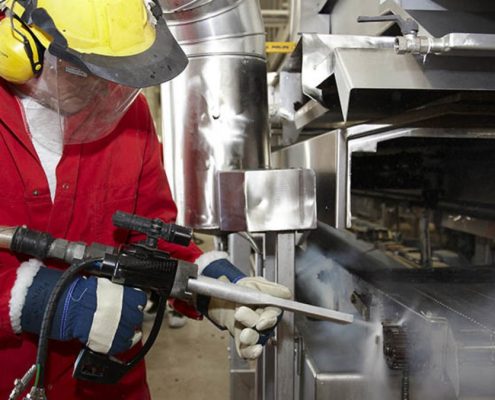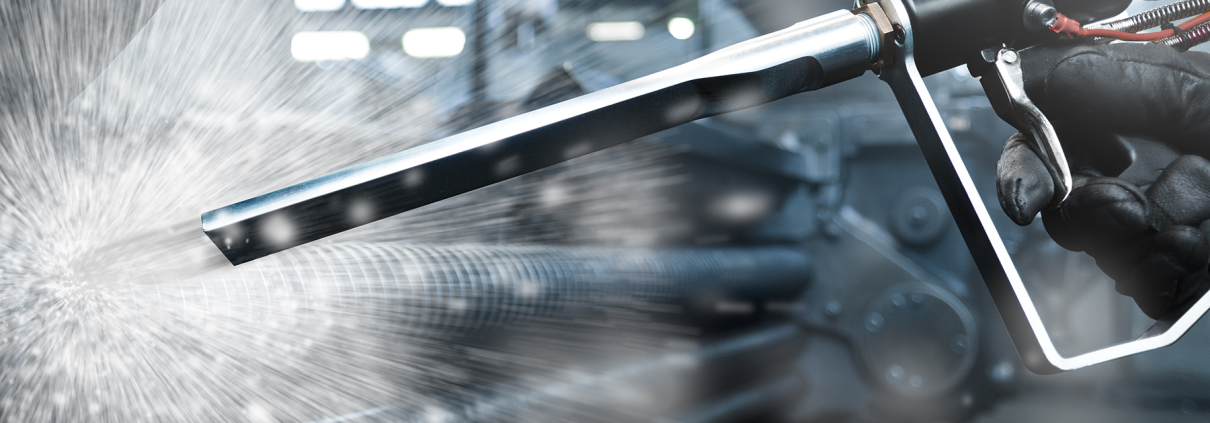Does Dry Ice Blasting Remove Paint?
Does Dry Ice Blasting Remove Paint?
Dry ice blasting is an increasingly popular method for cleaning surfaces in a variety of industrial and commercial applications. The process involves blasting surfaces with small pellets of dry ice, which effectively remove contaminants and buildup without damaging the underlying surface. However, one question that frequently arises is does dry ice blasting remove paint. In this blog post, we will explore the properties of dry ice and how they relate to paint removal, as well as the advantages and limitations of dry ice blasting for this purpose.
What is Dry Ice?
First, let's take a closer look at dry ice. Dry ice is the solid form of carbon dioxide (CO2), a colorless, odorless gas that is found naturally in the Earth's atmosphere. It is formed by compressing and cooling carbon dioxide gas to a temperature of -78.5°C (-109.3°F), at which point it solidifies into a hard, brittle substance that resembles ice. Unlike water ice, however, dry ice does not melt - it sublimates directly from a solid to a gas as it warms up, leaving no liquid residue.
The unique properties of dry ice make it an effective cleaning agent for a variety of surfaces. When dry ice pellets are blasted at high speed onto a surface, they rapidly sublimate on impact, creating a phenomenon known as "thermal shock." This causes contaminants on the surface to fracture and detach, while the underlying material is left undamaged. Additionally, the sublimation process creates a gas that helps to lift away the debris, leaving a clean surface behind.
So, does dry ice blasting remove paint? The answer is: it depends. Dry ice blasting is an abrasive process, meaning that it can remove material from a surface if applied with enough force. However, the degree to which it removes paint will depend on several factors, including the type of paint, the age of the paint, and the surface being cleaned.

In general, dry ice blasting is more effective at removing paint from hard surfaces such as metal or concrete than from softer surfaces like wood or plastic. This is because the force of the dry ice pellets can easily chip away at the surface of the paint, especially if it is already brittle or cracked. However, if the paint is still in good condition and well-adhered to the surface, dry ice blasting may not remove it entirely.
Another factor to consider is the type of paint being removed. Some types of paint, such as latex or acrylic, are more resistant to removal than others. Oil-based paints, for example, tend to be more brittle and may be easier to remove with dry ice blasting. However, it's important to note that even if the paint is removed, the underlying surface may still require additional cleaning to remove any residue or buildup.
Dry Ice Advantages
Despite the limitations of dry ice blasting for paint removal, there are several advantages to this method compared to traditional abrasive blasting techniques. For one, dry ice blasting is non-toxic and environmentally friendly. Because it uses CO2 pellets as the blasting material, there are no harmful chemicals or residues left behind. Additionally, because the dry ice sublimates on impact, there is no secondary waste to dispose of.
Another advantage of dry ice blasting is its versatility. It can be used on a wide range of surfaces, from delicate electronics to heavy machinery. This makes it an attractive option for industries such as aerospace, automotive, and food processing, where precision cleaning is essential.
In conclusion, dry ice blasting can be an effective method for removing paint from certain surfaces, but it is not a one-size-fits-all solution. The effectiveness of the process will depend on the type of paint, the age and condition of the paint, and the surface being cleaned. However, when used properly, dry ice blasting offers several advantages over traditional abrasive blasting methods, including environmental friendliness, versatility, and precision cleaning




Leave a Reply
Want to join the discussion?Feel free to contribute!